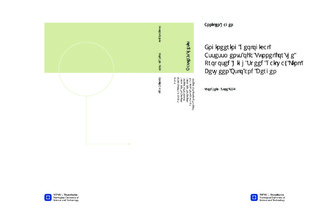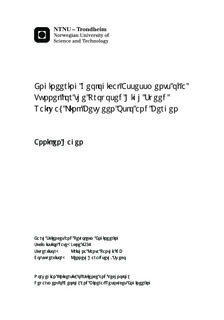| dc.description.abstract | Today, the larger cities in Norway are linked with railways, but the rail transport system is in need of an upgrade in order to compete with other means of transport. Long journey times associated with the Norwegian railway is one of the main factors contributing to that most people prefer travelling by air when travelling longer distances. Thus, a great potential exists for high-speed railway lines between the major cities of Southern Norway, which will reduce journey times significantly.On February 19, 2010, in a mandate from the Ministry of Transport and Communications, the Norwegian National Rail Administration was asked to study the possibilities of constructing high-speed railway lines in Southern Norway. One of the assessment's main conclusion is that development costs for the alternative routes are substantial and vary considerably depending on the proportion of tunnels on the respective lines. This is especially relevant for the link between Oslo and Bergen which will have to cross large mountainous areas. With strict requirements regarding inclination and stiffness of alignment, there will be numerous long ($>$ 5 km) to very long ($>$10 km) and partly deep tunnels along this particular route.In addition to large investment cost, challenges related to long and deep tunnels are considerable. Important aspects which needs to be considered are related to construction works, geology, environment and operation. Geology plays an important role since adverse and especially unforseen geological conditions may influence construction time and costs. In Southern Norway, the rock mass mainly consists of crystalline basement rocks of good quality. However, rock mass in faults and weakness zones found within the basement rocks have reduced quality. Cambro-Silurian sedimentary rocks also exist, which generally have lower strength and higher deformability than the basement rocks.This thesis focuses on one long tunnel proposed for the high-speed railway link between Oslo and Bergen. The tunnel will be about 40 km long, has a maximum overburden of 900 m and crosses under the Hardangerj{o}kulen glacier. The thesis evaluates engineering geological conditions of the tunnel and the most crucial aspects of tunnel stability problems are covered. Theoretical aspects of main factors influencing on tunnel stability are evaluated, including water inflow, potential swelling, faults and weakness zones and stress induced problems. Water inflow, tunnel squeezing and spalling are analysed and predicted by analytical and empirical approaches. Numerical modelling is used for analysing brittle failure in the rock mass. Special challenges related to long and deep tunnels are also emphasized. Based on findings in the stability assessment, construction costs and construction time for the tunnel are estimated. This includes estimates for both conventional and TBM tunnelling methods.It is concluded that the tunnel will face different geological challenges such as 1) spalling in massive brittle basement rocks, 2) tunnel squeezing in weak phyllite and 3) considerable water inflow under high pressure in fractured rock and weakness zones, which most likely will influence on the stability during tunnel excavation. Using conventional excavation methods, estimated construction time for one tunnel tube is 9.5 years. On the other hand, using TBM, estimated construction time is 4.9 years. Total costs for both main tunnel tubes are estimated to be 9.9 and 10.7 billion NOK for conventional and TBM excavation methods, respectively. | nb_NO |

